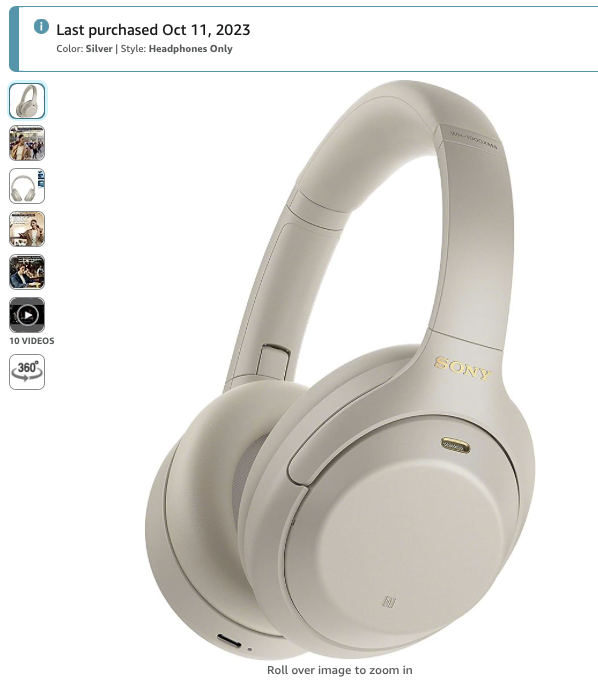A Leap from Earbuds to Over-Ear
As someone who recently transitioned from Bose earbuds to Sony’s WH-1000XM4 wireless noise-canceling stereo headset, I was both excited and skeptical.
Having used earbuds for years, I was curious to see how these over-ear noise-canceling headphones would fare in comparison, especially during my extensive travel schedule which included a 30-hour journey to the Maldives followed by a trip to China.
When purchasing these, I had a lot of unanswered questions about how noise cancelation worked and what I could expect.
So now that I have 3 months of real world experience using these headphones, I wanted to write out my experience and answer some questions that could have helped me before I bought these headphones myself.
Noise Cancellation Experience
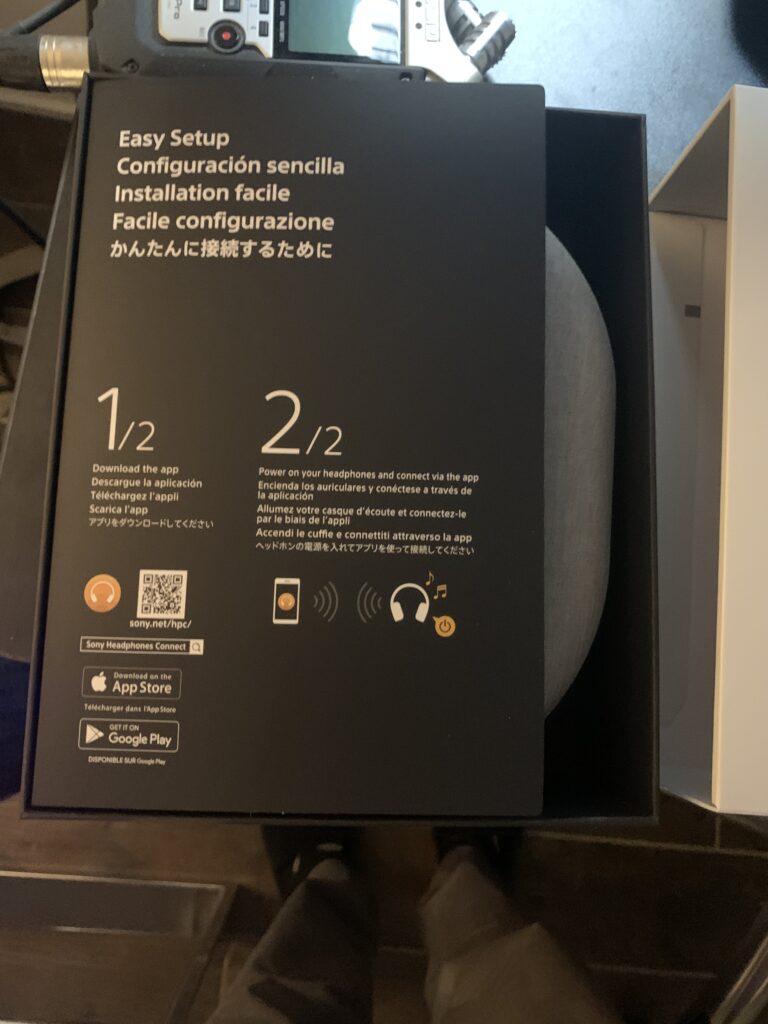
Let’s cut to the chase – noise cancelation.
As a newbie to the world of noise-canceling tech, I was curious: Would I be stepping into a soundproof bubble, or would it be more like turning down the volume on the world?
I knew that noise cancellation worked by using microphones to detect external sounds and then producing opposite sound waves to cancel them out, but I didn’t know the extent to which it blocked out sound.
So are noise canceling headphones totally soundproof?
My experience is that it’s not a completely sound proof bubble, but does make certain frequencies of sounds basically invisible, while greatly reducing others. Here’s what I mean:
The WH-1000XM4 does a stellar job, especially with those low-frequency rumbles like jet engines. I wore these on a variety of planes including the Airbus 321 and a Boeing 747 (super loud plane) and it significantly reduces both the engine noise and in-cabin noise in each cases.
However, don’t expect to be completely cut off from reality; you’ll still catch bits of chit-chat and higher-pitched engine noises, but it’s much less intrusive.
To be clear, if you’re playing music, it basically makes the world around you disappear.
But if you’re not playing music and just using the headphones to dampen noise while not listening to anything, you’ll still be able to hear people talking around you and when the pilot makes an announcement, though it will be much quieter.
What percentage of noise does it reduce?
Overall, it does reduce a very large amount of what I’d call “ambient” or white noise that normally is quite loud in an airplane.
If I had to put a number on it, I’d guess that it turns down the volume of the outside world about 75% compared to regular headphones.
It’s a substantial improvement from my previous earbuds both in terms of audio quality and also helping me reduce noise to sleep on the long flights.
It’s worth noting that these headphones also allow you to manually select how much background noise you allow through, so you can increase it if needed. For example, when I walk my dog at night in the city, I turn the noise cancelation down a bit so I can hear if anyone tries to sneak up on me.
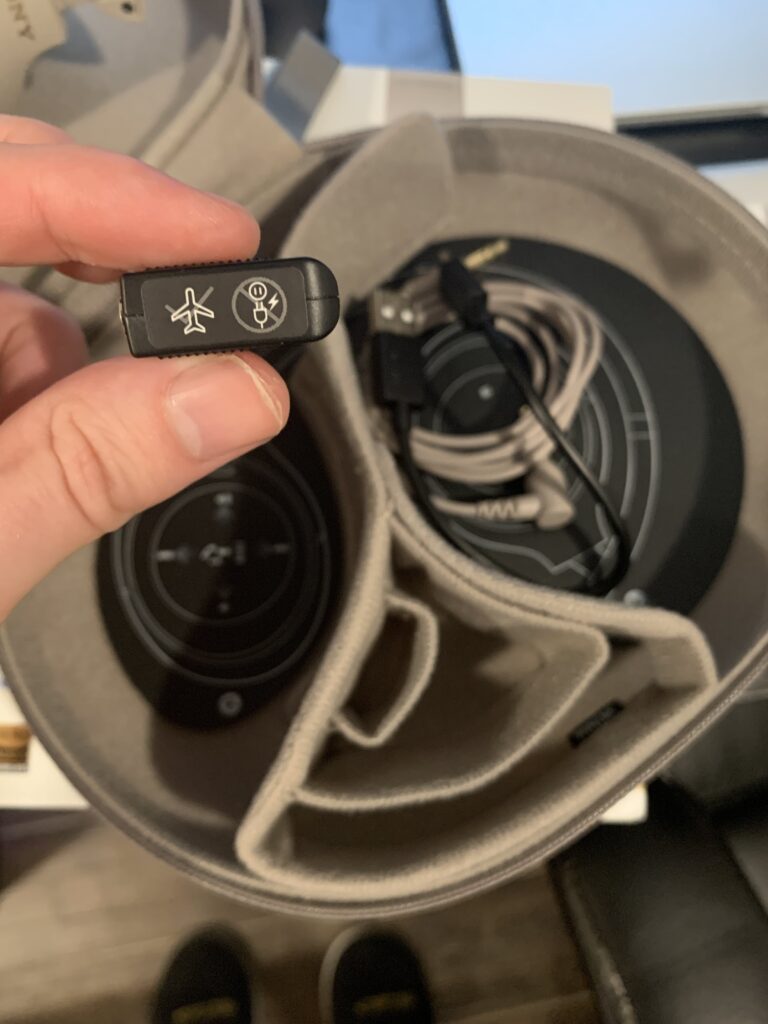
Sound Quality: A Pleasant Surprise
Now, onto the sound of music (and podcasts) – it’s a winner!
I had my doubts, especially about the bass, but boy, was I wrong. The sound is rich, balanced, and feels more ‘natural’ compared to earbuds. It’s very evenly balanced for a variety of music and I’ve been satisfied listening to everything from jazz to hip hop. Absolutely no complaints.
Another Big Perk for Travelers: Airplane Jack Adapter
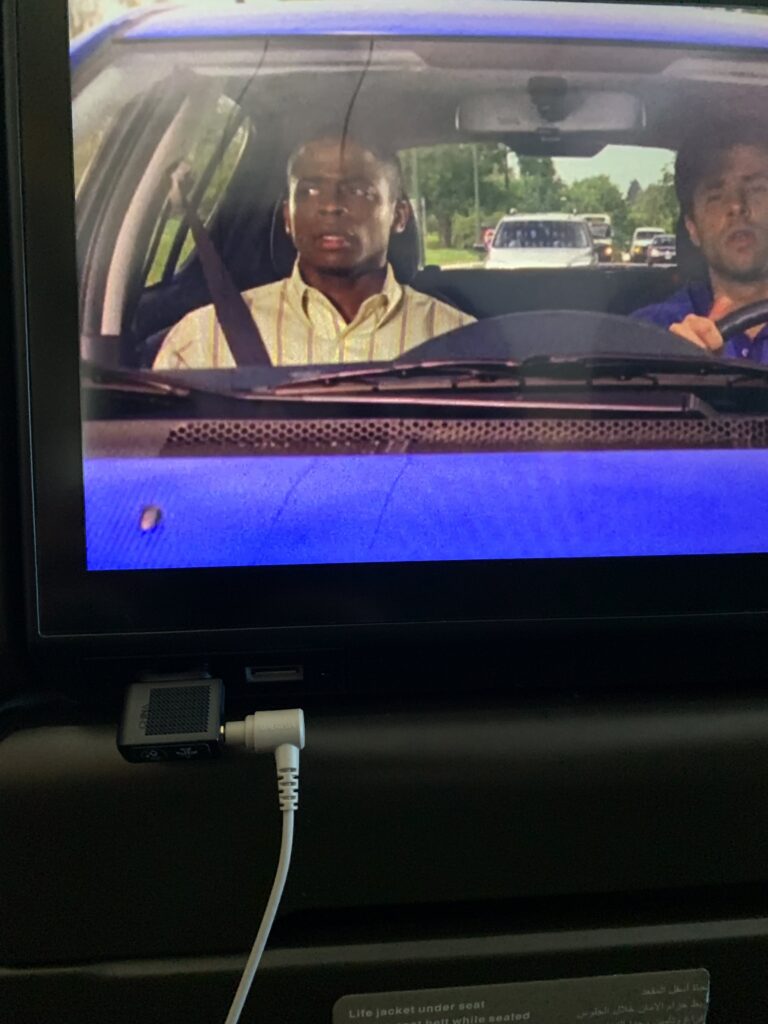
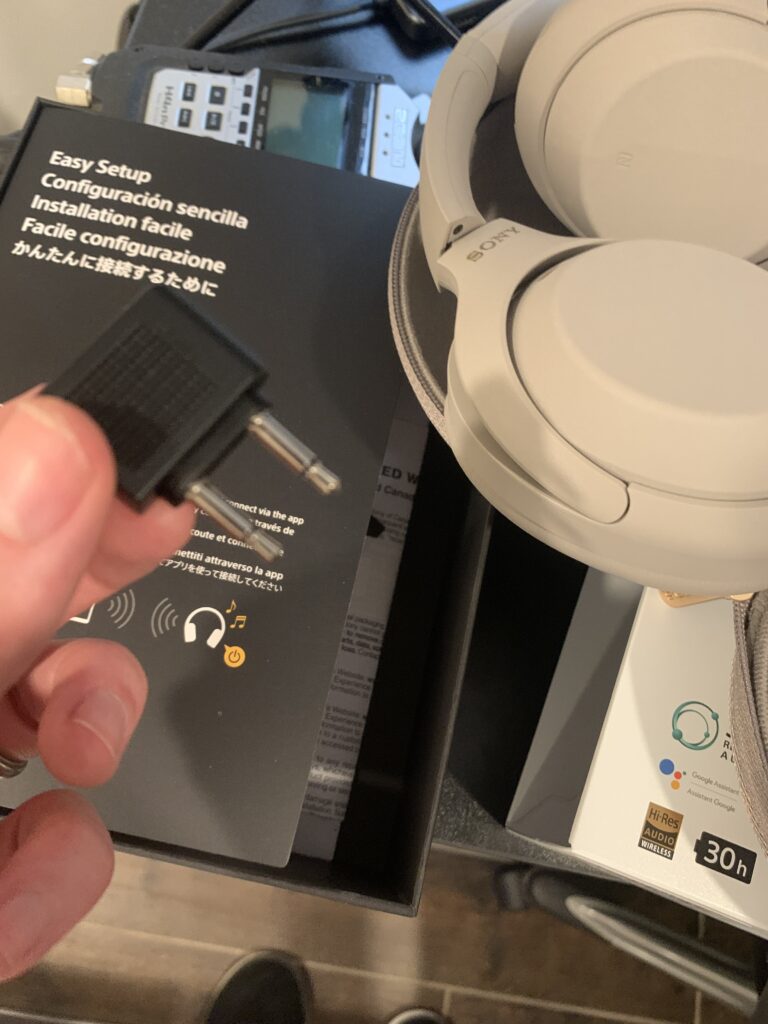
A nifty little perk is the airplane audio adapter that comes with it, letting you plug into those dual-slot jacks for in-flight movies. Trust me, once you watch a movie with these on, there’s no going back to those painful, treble tuned airline earphones.
A Little TOO Effective?
Real quick before we get onto battery life: Here’s a funny (and slightly scary) story: these headphones are so effective at noise canceling that they can lead to some unexpected surprises.
Picture this – I’m lost in my work at my office, deeply immersed in the blissful silence and suddenly, my wife taps my shoulder. I seriously screamed and almost jumped out of my skin!
I hadn’t heard her coming down the stairs at all.
So, a word of caution – they might make you a bit oblivious to your surroundings unless you turn down the noise cancelation mode, which you can do manually to suit your environment.
Practicality and Battery Life: The Long Haul Champion
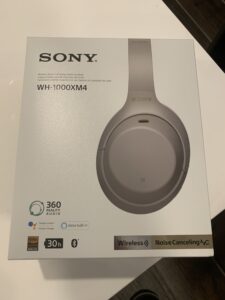
On to another very important consideration: The battery life (which as it turns out is nothing short of miraculous).
It lasted my entire trip from the East Coast to the Maldives, and then to China, without a hitch.
My old earbuds would’ve been begging for a charger long before that, usually running low after 5 hours.
I guess this makes sense as the over-ear headphones have much more room in them for battery compared to tiny earbuds, but it’s not something I ever thought about. But it’s a big PRO for travelers.
The Drawbacks
This wouldn’t be a balanced review without mentioning the drawbacks, so here they are:
- If you wear over-ear headphones for 6 hours at a time, you might get a little sweaty around your ears. This is an inescapable reality of having anything cover your ears for that long. It’s very minor and doesn’t bother me personally, but was different compared to earbuds (which have their own drawback of hurting your ear canal after so long). So I figured I’d at least mention it.
- If you’re like me and use the foldable airline seat headrest flaps to support your head during long flights, be aware that it will no longer be your head making contact with the support flaps, but your headphones. This doesn’t impact your ability to rest the back of your head against the seat as usual, only if you use the side flaps that you can manually fold out. Again, this wasn’t a big deal, but something I hadn’t considered and which caught me a little off-guard the first time I used them.
Controls: A Learning Curve
Now, a bit of a facepalm moment – the controls.
I spent the first month of owning these headphones thinking I had defective set or they were poor quality because I couldn’t skip tracks, pause, or rewind with a tap.
Turns out, they’re swipe-activated, not tap!
To move forward or backwards between tracks you literally just swipe your finger forward or back across the earphone, you don’t tap onto it.
There are no physical buttons so I kinda just assumed it was tap activated, but I was wrong. This was totally my fault and a classic case of RTFM (Read The Flipping Manual), which, admittedly, I didn’t. But once I got the hang of it, it was smooth sailing.
Once I realized my mistake, the controls were intuitive and responsive and I’ve had no issues since then.
Final Assessment
All in all, the Sony WH-1000XM4 has won me over.
They’re fantastic for travel, have a good enough mic for work calls (though I wouldn’t use them to record your next music album), and the 30-hour battery life is the real deal that really impressed me.
If you’re on the fence about switching to over-ear, noise-canceling headphones, I say take the leap – these Sony’s might just surprise you as much as they did me!
The Big Wins
I really enjoy being able to wear these on long flights without the battery dying, without my ears hurting, and without having to hear the low rumble of jet engines. They also let you listen to music at lower volume, since there’s less external noise to block, which can help reduce headaches if you listen for hours at a time like me.
If you want to see the exact model I own, you can check it out here.
If you have any other questions, just drop me a note and I’m happy to update this post with any other details you may be curious about!
